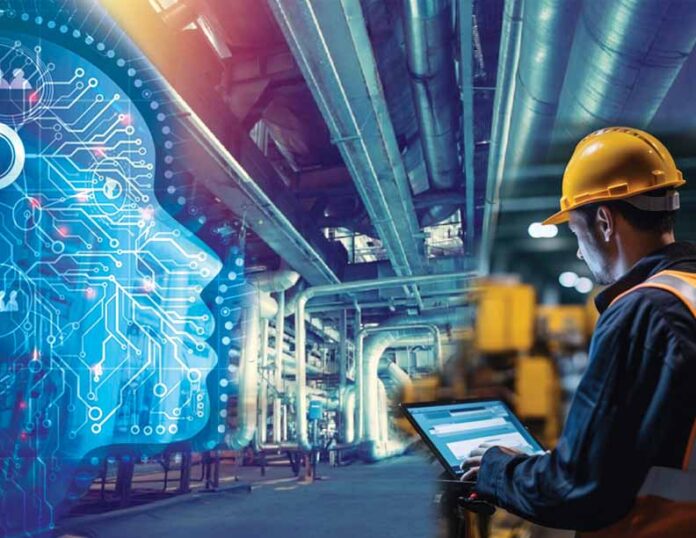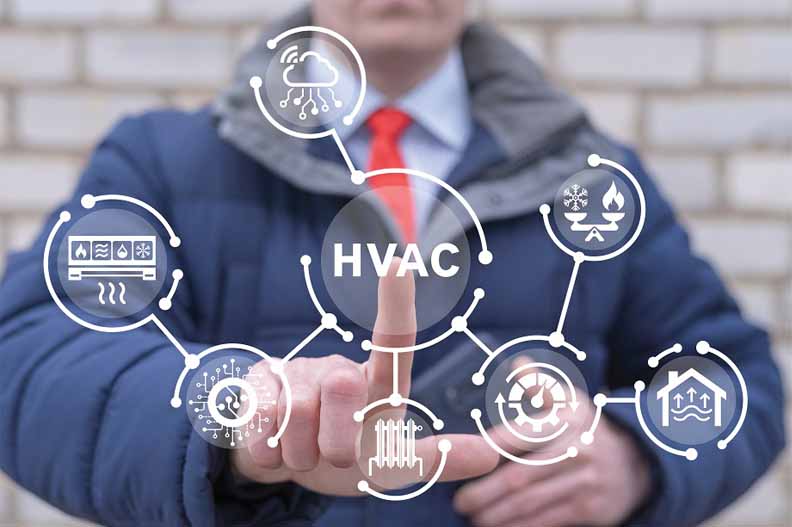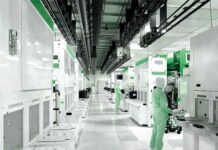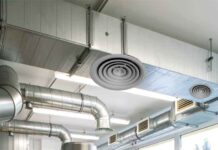
MEP stands for Mechanical, Electrical, and Plumbing – three critical disciplines that are integral to building design and construction. In the context of HVAC (Heating, Ventilation, and Air Conditioning), MEP systems form the backbone of comfortable, energy-efficient, and functional indoor environments.
The mechanical aspect of MEP in HVAC involves equipment such as chillers, boilers, Air Handling Units (AHUs), fans, and ductwork. These components work together to regulate indoor temperature, humidity, and air quality. Proper design and integration of these mechanical systems are essential for optimal performance and energy efficiency.
Electrical systems
Electrical systems in HVAC include power supply, distribution panels, control wiring, and automation systems. Electrical components control fans, compressors, thermostats, and advanced Building Management Systems (BMSs). Energy-efficient design, like Variable Frequency Drives (VFDs) and occupancy sensors, reduces operational costs while enhancing system performance.
Plumbing systems
Plumbing in HVAC primarily deals with water supply for chillers, cooling towers, and heating systems. It also includes drainage for condensate and system flush-outs. Proper pipe sizing, insulation, and layout prevent leaks, reduce energy losses, and ensure safe system operation.
Integration and coordination
Effective coordination of MEP components ensures seamless operation and prevents issues like spatial conflicts or system inefficiencies. Building Information Modeling (BIM) is often used for 3D visualisation, design validation, and clash detection, improving the accuracy and reliability of HVAC installations.
Importance in sustainability
Modern MEP design emphasises sustainability. LEED-certified buildings focus on reducing energy consumption and improving indoor air quality through integrated MEP strategies. Innovations like heat recovery systems, solar HVAC, and greywater reuse exemplify sustainable MEP design.
A well-designed MEP system in HVAC is vital for building comfort, safety, and efficiency. As technologies advance, integration and innovation in MEP design will continue to shape the future of HVAC systems across residential, commercial, and industrial applications.
However, looking at the technological advancements that India is experiencing with the rise of AI and automation, we must understand the rising importance of AI in MEP and HVAC.
AI and MEP in HVAC
In today’s fast-evolving technological landscape, Artificial Intelligence (AI) is rapidly transforming how we design, manage, and operate HVAC systems within the MEP (Mechanical, Electrical, and Plumbing) domain. From intelligent energy management to predictive maintenance, AI is reshaping the traditionally manual and reactive processes of HVAC into smart, automated, and adaptive systems.
But like any emerging technology, AI in MEP raises critical questions: Is this advancement all good? Or are there hidden drawbacks that the industry needs to be cautious of? Let’s explore the impact of AI in MEP-focused HVAC design and operations – examining the pros and cons before arriving at a verdict.
Understanding AI in MEP-HVAC Context
AI, in the MEP context, refers to machine learning algorithms and intelligent systems integrated into HVAC equipment, Building Management Systems (BMS), and design tools. These AI-powered systems can learn from patterns, make decisions, and optimise performance without constant human intervention. In HVAC, AI is applied across:
- Smart building energy management
- Fault Detection and Diagnostics (FDD)
- Demand-controlled ventilation
- Predictive maintenance
- HVAC load forecasting
- BIM (Building Information Modeling) design automation
The Challenges and Concerns
Despite its potential, AI in MEP-HVAC does not come without challenges. Here are some of the common concerns voiced by HVAC professionals and stakeholders:
Initial costs and complexity
The implementation of AI-enabled HVAC systems often requires substantial upfront investment in software, sensors, IoT infrastructure, and training. For small to medium enterprises, these costs can be prohibitive, potentially slowing adoption.
Data dependency
AI thrives on data. Poor-quality, sparse, or unstructured data from existing HVAC systems can lead to inaccurate predictions and faulty decisions, undermining system reliability.
Job displacement
There is a growing fear among HVAC technicians and MEP engineers that AI will automate significant portions of their jobs, especially in design, diagnostics, and routine monitoring. This raises workforce anxiety, especially in an industry traditionally dependent on human expertise.
Cybersecurity risks
As AI-driven HVAC systems become more connected through the Internet of Things (IoT), the risk of cyberattacks also increases. If not properly secured, intelligent HVAC systems can become vulnerable entry points to a building’s IT infrastructure.
Opaque decision making
AI algorithms often function as ‘black boxes’, making decisions based on statistical models that are difficult for humans to interpret. This can reduce trust and make troubleshooting difficult when things go wrong.

The Benefits and Breakthroughs
While the concerns are valid, the positive potential of AI in MEP-HVAC is undeniable. Let’s hereafter explore the many ways AI is revolutionising the industry for the better.
Energy efficiency and sustainability
AI systems optimise energy use by constantly learning from environmental conditions, occupancy data, and historical trends. This leads to:
- Reduced energy consumption
- Lower carbon footprints
- More sustainable building operations
For example, AI-enabled BMS can automatically adjust HVAC loads in real-time to prevent energy waste while maintaining occupant comfort.
Predictive maintenance
Instead of relying on reactive repairs or rigid schedules, AI can forecast equipment failures before they happen. Sensors collect data on vibration, temperature, and performance metrics, allowing AI to alert operators about issues early – saving downtime and repair costs.
Enhanced comfort and Indoor Air Quality (IAQ)
AI monitors CO₂ levels, humidity, and temperature to dynamically adjust HVAC settings. This ensures a healthier and more comfortable indoor environment, especially in commercial or healthcare settings where IAQ is critical.
Smarter design and planning
With the integration of AI in BIM tools, HVAC design becomes more efficient. AI can simulate multiple design alternatives, identify clashes, and recommend energy-optimised layouts – dramatically reducing manual labour and human error in the planning stage.
Real-time monitoring and automation
AI provides real-time dashboards, anomaly detection, and automated responses. HVAC systems no longer require manual intervention for every adjustment – improving system responsiveness and reliability.
Verdict – A Future Worth Embracing
After weighing the drawbacks and the benefits, it becomes clear that while AI for MEP in HVAC presents certain challenges, its advantages far outweigh the negatives – provided it is implemented wisely and ethically. Key enablers for a positive transition are:
- Training and upskilling of MEP professionals to work alongside AI, not compete with it.
- Transparent AI models that provide explainable outputs.
- Robust Cybersecurity Frameworks to protect smart HVAC systems.
- Affordable and Scalable Solutions tailored for small and mid-size firms.
Final Thoughts
AI in MEP-HVAC is not just a passing trend – it is the foundation of future-ready, intelligent buildings. From decarbonising our cities to enhancing occupant health and reducing operational costs, AI offers transformative capabilities.
So, is AI in HVAC good or bad?
When viewed through the lens of long-term benefits, enhanced performance, and sustainability – AI is not just good for HVAC, it’s essential. Rather than fearing the change, the MEP industry must embrace AI as a strategic ally in creating smarter, greener, and more efficient buildings for tomorrow.

Bhupendra Ojha is a dedicated HVAC expert at Marudhar Industries Limited, Ahmedabad. He has 12+ years of experience, striving to shape the future of sustainable cooling in India.








